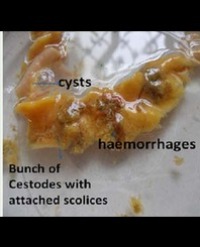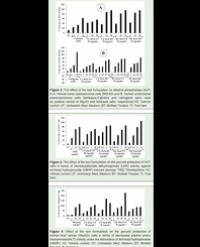The study was investigated to find out the impact of the Biofield Energy Treated test formulation on the function of vital organs viz. bones, heart, liver, lungs, and brain in various cell-based assays. The test formulation/ test item (TI) and the cell media (Med) was divided into two parts; one untreated (UT) and other part received the Biofield Energy Treatment remotely by a renowned Biofield Energy Healer, Vicki Lynn Kindy, USA and was labeled as the Biofield Energy Treated (BT) test formulation/media. Cell viability data suggested that the test formulation was safe and non-toxic in nature in six different cells. The experimental groups of untreated medium (UT-Med) + Biofield Treated Test Item (BT-TI), BT-Med + UT-TI, and BT-Med + BT-TI groups showed 116.4% (at 1 µg/mL), 84.1% (at 63 µg/mL), and 98.5% (at 63 µg/mL) restoration of cell viability, respectively in human cardiac fibroblasts cells (HCF) compared to the UT-Med + UT-TI group. Moreover, UT-Med + BT-TI group showed 62.5%, 156.8%, and 82.4% restoration of cell viability at 0.1, 1, and 10 µg/mL, respectively in human hepatoma cells (HepG2) compared to untreated. Furthermore, 224.2% and 295.6% restoration of cell viability was observed in adenocarcinomic human alveolar basal epithelial cells (A549) by UT-Med + BT-TI group at 1 and 10 µg/mL, respectively compared to the untreated. The alkaline phosphatase (ALP) level was significantly increased by 85.3%, 72.2%, and 79.4% in the UT-Med + BT-TI, BT-Med + UT-TI, and BT-Med + BT-TI groups, respectively at 10 µg/mL in human bone osteosarcoma cells (MG-63) compared to the untreated. Additionally, the level of ALP was significantly increased by161% (at 0.1 µg/mL), 84.5% (at 25 µg/mL), and 63.9%(at 50 µg/mL) in the UT-Med + BT-TI, BT-Med + UT-TI, and BT-Med + BT-TI groups, respectively in human endometrial adenocarcinoma cells (Ishikawa) compared to the untreated. The percent protection of HCF (heart) cells (decreased of LDH activity) was significantly increased by 189.7% (at 0.01 µg/mL) and 51.7% (at10 µg/mL) in the UT-Med + BT-TI and BT-Med + BT-TI groups, respectively compared to the untreated in HCF cells. The percent protection of HepG2 (liver) cells (decreased of ALT activity) was significantly increased by 95.1% (at 25 µg/mL), 63.2% (at 1 µg/mL), and 112% (at 63 µg/mL) in the UT-Med + BT-TI, BT-Med + UT-TI, and BT-Med + BT-TI groups, respectively compared to untreated in HepG2 cells. The percent protection of A549 (lungs) cells (increased of SOD activity) was significantly increased by 36.9% and 44.1% in the BT-Med + UT-TI and BT-Med + BT-TI groups, respectively at 0.1 µg/mL compared to untreated in A549 cells. Serotonin level was significantly increased by 199.5%, 168.7%, and 83.9% in the BT-Med + BT-TI group at 0.1, 1, and 10 µg/mL, respectively as compared to untreated in human neuroblastoma cells (SH-SY5Y). The relative quantification (RQ) of vitamin D receptor (VDR) was significantly increased by 205.2% (at 10 µg/mL), 189% (at 0.01µg/mL), and 315.6% (at 10 µg/mL) in the UT-Med + BT-TI, BT-Med + UT-TI, and BT-Med + BT-TI groups, respectively compared to the untreated in MG-63 cells. Overall, these results suggest that Biofield Treated test formulation significantly improved the bones, heart, liver, lungs, and brain-related functional enzyme biomarkers. Altogether data suggest that the Biofield Energy Treatment (The Trivedi Effect®) can be useful to protect and maintain the normal function of each vital organ such as lungs, liver, heart, brain, and bones. Therefore, The Trivedi Effect® can be used as a complementary and alternative therapy against several disorders such as coronary artery disease, heart attack, heart failure, arrhythmias, congenital heart disease, cirrhosis, cardiomyopathy, liver cancer, Wilson disease, hemochromatosis, pneumonia, asthma, chronic bronchitis, emphysema, osteoporosis, cystic fibrosis, etc
Vicki Lynn Kindy1, Mahendra Kumar Trivedi1, Alice Branton1, Dahryn Trivedi1, Gopal Nayak1, Sambhu Charan Mondal2 and Snehasis Jana2*


